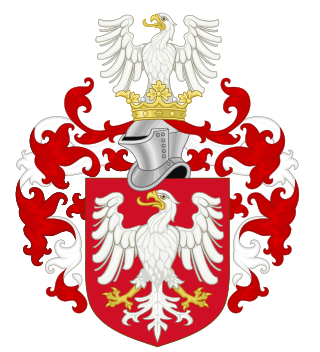
The House of Piast was the first historical ruling dynasty of Poland. The first documented Polish monarch was Duke Mieszko I. The Piasts' royal rule in Poland ended in 1370 with the death of King Casimir III the Great.

Charles IX, also Carl, reigned as King of Sweden from 1604 until his death. He was the youngest son of King Gustav I and of his second wife, Margaret Leijonhufvud, the brother of King Eric XIV and of King John III, and the uncle of Sigismund, who became king both of Sweden and of Poland. By his father's will Charles received, by way of appanage, the Duchy of Södermanland, which included the provinces of Närke and Värmland; but he did not come into actual possession of them till after the fall of Eric and the succession to the throne of John in 1569.

John III was King of Sweden from 1569 until his death. He attained the Swedish throne after a rebellion against his half-brother Eric XIV. He is mainly remembered for his attempts to close the gap between the newly established Lutheran Church of Sweden and the Catholic Church, as well as his conflict with and possible murder of his brother.
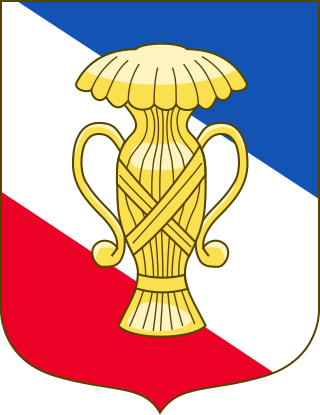
The House of Vasa or Wasa was an early modern royal house founded in 1523 in Sweden. Its members ruled the Kingdom of Sweden from 1523 to 1654 and the Polish–Lithuanian Commonwealth from 1587 to 1668; its agnatic line became extinct with the death of King John II Casimir of Poland in 1672.

John II Casimir Vasa was King of Poland and Grand Duke of Lithuania from 1648 to his abdication in 1668 as well as a claimant to the throne of Sweden from 1648 to 1660. He was the first son of Sigismund III Vasa with his second wife Constance of Austria. John Casimir succeeded his older half-brother, Władysław IV Vasa.
The early Vasa era is a period in Swedish history that lasted between 1523–1611. It began with the reconquest of Stockholm by Gustav Vasa and his men from the Danes in 1523, which was triggered by the event known as the Stockholm Bloodbath in 1520, and then was followed up by Sweden's secession from the Kalmar Union, and continued with the reign of Gustav's sons Eric XIV, John III, John's son Sigismund, and finally Gustav's youngest son Charles IX. The era was followed by a period commonly referred to as the Swedish Empire, or Stormaktstiden in Swedish, which means "Era Of Great Power".
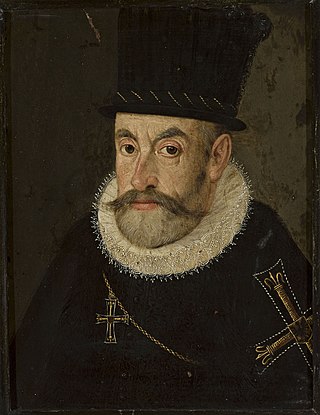
Maximilian III of Austria, was a member of the House of Habsburg and the Archduke of Further Austria from 1612 until his death. He was also briefly known as Maximilian of Poland during his claim for the Polish throne. He would try to be elected as King of Poland he was defeated. He was also Grand Master of the Teutonic Order
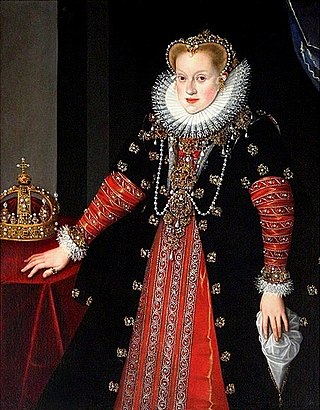
Anne of Austria was Queen of Poland and Sweden and a Grand Duchess of Lithuania as the first consort of King Sigismund III Vasa.

Anna Jagiellon was Queen of Poland and Grand Duchess of Lithuania from 1575 to 1587.
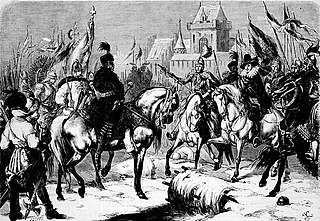
The Battle of Byczyna, also known as the Battle of Pitschen, was the deciding battle of the 1587–1588 War of the Polish Succession, which erupted after two rival candidates were elected to the Polish throne. The two opposing sides had forces nearly evenly matched, with armies about 6,000 strong, roughly half infantry and half cavalry. The battle was an overwhelming victory for the Polish-Swedish faction, led by the Swedish-born king-elect Sigismund III Vasa, over the army of his rival to the throne, Maximilian III, Archduke of Austria.

Anna Vasa of Sweden was a Swedish princess heavily involved in the politics of that country and of Poland. She was starosta of Brodnica and Golub. The youngest child of King John III of Sweden and Catherine Jagiellon, she was close to her brother Sigismund Vasa, King of Poland (1587–1632) and King of Sweden (1592–99). Raised a Catholic, Anna converted to Lutheranism in 1584. Though she had several suitors, she remained unmarried.

John of Sweden, Duke of Östergötland was a Swedish royal dynast. He was titular Duke of Finland 1590–1606 and reigning Duke of Östergötland 1606–18.
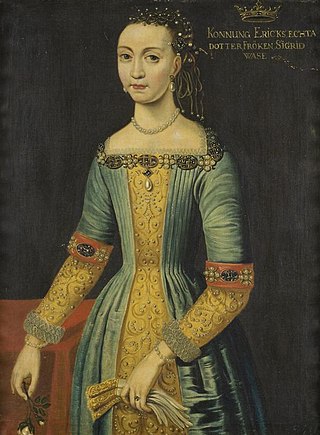
Sigrid Eriksdotter of Sweden was a Swedish princess, the legitimized daughter of King Eric XIV of Sweden and of his lover, later spouse and queen, Karin Månsdotter.

The War of the Polish Succession or the Habsburg-Polish War took place from 1587 to 1588 over the election of the successor to the King of Poland and Grand Duke of Lithuania Stephen Báthory. The war was fought between factions of Sigismund III Vasa and Maximilian III, with Sigismund eventually being crowned King of Poland and Grand Duke of Lithuania. Two major battles of this conflict included the Siege of Kraków, in which Maximilian III failed to capture the capital of the Commonwealth, and the Battle of Byczyna, in which Maximilian was forced to surrender. Sigismund's victory was significantly the doing of Chancellor and Hetman Jan Zamoyski, who stood behind both the political intrigue and the military victories of this conflict.
The early modern era of Polish history follows the Late Middle Ages. Historians use the term early modern to refer to the period beginning in approximately 1500 AD and lasting until around the Napoleonic Wars in 1800 AD.
Gustav of Sweden - English also: Gustavus ; Swedish : Gustaf - may refer to:

The free election of 1587 was the third royal election to be held in the Polish–Lithuanian Commonwealth, which took place after the death of King Stefan Batory. It began on June 30, 1587, when Election Sejm was summoned in the village of Wola near Warsaw, and ended on December 27 of the same year, when King Sigismund III was crowned in Kraków’s Wawel Cathedral.
Events from the year 1599 in Sweden

Events from the year 1655 in Sweden













